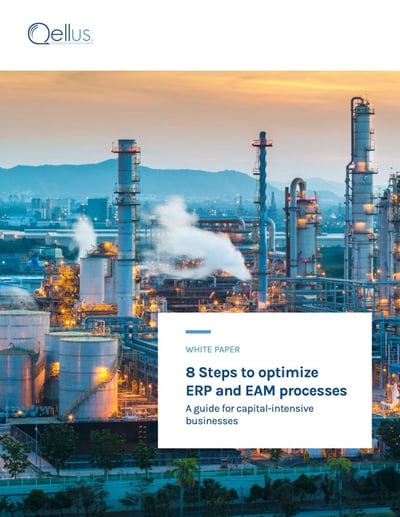The 4 top challenges for asset-intensive businesses

Common challenges that prevent a business from achieving benchmarks set by your peers. Here’s how to perform with the best.
Today, asset-intensive companies have a lot to keep track of. The introduction of information and data management requirements, as well as compliance concerns, have forced companies to reconsider how they approach asset management. Data management and time optimization have become paramount to the operation and profitability of these organizations – companies now have to concern themselves with data considerations and process optimizations if they want to stay competitive.
The current state of asset-intensive businesses
Asset-intensive businesses such as life sciences, utilities, and manufacturing firms face many challenges. However, the primary challenges are rooted in the management of data and time. These challenges, when inadequately addressed, can have far-reaching, detrimental effects that are felt by employees, suppliers, and customers of your organization.
These challenges are:
- Data silos
- Unoptimized processes
- Disparate and disconnected systems
- Unnecessary delays and mistakes
Below, we will consider each and the effects they may have on a business.
Data silos
For companies that leverage data to drive decision-making, they gain a competitive advantage, reduce business costs, and increase profit. Hence, information is currency – and as any business will know, cash-flow is important. Just as access to cash fuels your business, data fuels your processes. One of the major challenges asset-intensive businesses face is not the accumulation of data, but the access to it. Far too many times, data is strewn across repositories, and critical documents simply cannot be found when they are needed. This documentation may be contained in different document systems, have a little direct reference to the process they support, or be managed inconsistently – making finding and verifying the accuracy of documents time-consuming and overly complicated.
These disparate and inaccessible data locations are known as data silos, and can seriously impact the productivity of your employees and operations as a whole. For areas such as maintenance, logistics, management, and compliance, documentation must be able to be accessed quickly and easily.
Unoptimized processes
Company processes that are performed on a regular basis may not always be following the most efficient approach. At best these processes need to be adjusted and at worst they may be hindering productivity and confusing employees.
Accessible and organized documentation provides certainty for process owners and a more objective approach to accomplishing tasks for users. It also decreases the time required for operations and maintenance due to stakeholders having fast access to information they need and causes greater visibility and control.
Failing to optimize, or even outright eliminate inefficient process steps drains an organization’s resources that could have been better spent elsewhere.
Disparate and disconnected systems
Many businesses within regulated industries such as life sciences, utilities, and energy are required to produce and consume information across various management systems such as OpenText, SAP, and Maximo. However, problems arise between the systems since none of them naturally integrate with one another. This can cause unnecessary delays and potential for errors with tasks requiring coordination across multiple systems.
Plant maintenance activities are a good example. In these scenarios, it is typical that maintenance teams, plant managers, finance departments, and suppliers must all be able to access common files from SAP, Maximo, and engineering systems. Without a seamless document management integration to these independent systems, these teams are left to find their own solutions, preventing them from updating a single version of critical files effectively.
Unnecessary delays and mistakes
Incomplete, outdated, or even incorrect information from multiple sources can cause unnecessary delays and mistakes. Referencing the wrong or outdated documentation could even cause dangerous situations where mistakes lead to injury or death.
Many businesses seem to accept this as an industry risk, but solutions to this problem exist. Digital transformation can streamline processes and give employees a single source of truth for more accurate documentation, faster delivery, and a safer working environment.
A solution for the industry
Every business in asset-heavy industries aims to alleviate or avoid these challenges as they attempt to deliver cost-effective products or services. One of the most effective solutions to tackle all of these challenges is through well-organized, accessible documentation, coupled with optimized processes.
However, many businesses do not know where to start or how to digitize their processes with today’s technology. The truth is, there is a better, more efficient approach leveraging new technology to automate and optimize business operations.
This is why gaining some advice from industry experts who specialize in process optimization and technology is a smart investment.
An investment in guidance and direction
If you would like more information on how asset-intensive businesses can optimize their processes take a look at this detailed step-by-step guide here. However, if you would like a more hands-on approach that is customized to your challenges, consider Qellus.
Qellus has years of experience with asset documentation and organization for highly regulated industries. We are an expert in helping companies from around the world get the most out of their processes and ERP or EAM systems.

Comments